- Home
-
Articles
-
2017
>
- North Korea; A Reflection of a Global Hybrid Conflict
- Turkish Crisis: World War III but nobody knows what side they are on?
- Glaciers or Rising Oceans; Damned if you do, damned if don’t, And maybe both
- Walls, Walls, Walls
- France's Hybrid Civil War
- Predictions of space exploration for the next 500 years
-
2018
>
- NOAA shows a modest 3.2mm sea level rise over the last year. How significant is the current sea level raise from a geological perspective?
- Mexico’s Quasi Hybrid Insurgency and a Reflection on Murder Rate Statistics
- Russia strives for imperial might in the context of the first World Hybrid War
- Paleohydrological events from the late Pleistocene to the early Holocene 30kya to 1500 AD
-
2019
>
- Micro Interglacial Cycles and an alternative understanding to Sea Level Fluctuations from a Paleoclimatic Perspective the Last 140,000 years
- Increasing Summer Insolation of the Northern Hemisphere Trends Towards Reduced Ice Volume; Coupled by a 400,000 year Eccentricity Cycle Extending the Holocene Interglacial
- Why are the Chinese Grumpy: Up to 500 million people died from famine, natural disasters, war, political suppression, ethnic cleansing, pestilence and such the last 2200 years
- China's New Dynasty: Middle Class, Automobile, Science, and Robot Revolution
- Orbital Variations Effects on Interglacial Behavior and Paleohydrological Events during the Quaternary Ice Age: A Compilation of MOTM editorial pieces
- Native American Society and Civilization Collapse Part I; Old World Diseases and Expansion/Collapse of Empires not Unique to European Colonization
-
2020
>
- The History of the “Sieg Heil” Nazi Salute and its shared common origins with the Roman Salute, Bellamy salute, and the swearing in of the Mexico President; And the not so innocent raising of the Fist of Black power
- In the excitement of the 2019-2020 Bush Fires in Australia; people have forgotten about the Legendary Australian Bush Fire of 1974-1975. The Current Bush Fire doesn’t even hold a torch up to it
- Covid 19 Crisis; what does age have to do about it in Italy, forgotten cancer crisis caused by the financial crisis in 2009, and why Africa doesn’t care
- A Quick Look at Nuclear Power in 2020 and Beyond
- India: Rising Economic Star with a Contentious and Troubling Past
-
2017
>
- BulletinNews
- MOTM EM
- Video
- Meetings/Symposium
- Podcasts
- Contributing Organizations
 Tokyo, Japan- Our Meet and Greet in the summer of 2021 in Tokyo, Japan was a success. Most popular topics requested are Japanese National Debt, USA Credit rating after reaching a national debt of 28 Trillion Dollars, Nanotechnology, Micro-robotics, Artificial Intelligence, Industrial Automation, Sovereignty of Taiwan-Two-China Policy, Deep Fake News, North Korea Nuclear Missile Program, China's Aggressive South China Sea Activity, China's Currency Manipulation, China's Intellectual Property Violations, Heavy Involvement of China's PLA in the Private sector, USA Voting Vulnerabilities, USA Voting Irregularities and Lack of Credibility, USA Social Media Censorship, Chinese Origin of the COVID-19, Weakness in COVID-19 Testing capabilities, Abuse of COVID-19 contact Trace APPs for Political Bias, COVID-19 Lockdown Menticide on Global Youth, Financial Gain and Advantage From COVID Vaccines from Blackwater and Vanguard, Pfizer 2009 2.3 Billion Dollar Lawsuit for Bribing Doctors, Growing Cyber Risks from China, Russia, and North Korea, Nuclear War Risk between India vs. Pakistan, China's Place as an Economic and Military Superpower by 2030-2050, Risk of Holding US Treasuries, India's Rapid Economic Growth, Asteroid Mining, and DNA Gene Manipulation. Many prominent people would like to set up a second meeting and share resources for future social media enterprises.
0 Comments
 Tel Aviv, Israel- Our meeting and discussion this spring 2021 moved to Zoom due to the third intifada and and Hama Insurrection with follow up email based discussions. It was a really excellent turn out with several hundred leaders in NGOs, media, policy making positions, and local business persons from the greater Tel Aviv area. Most popular topics discussed were are Hezbollah Missile Buildup, Hezbollah Assistance From Iran, Shiite Crescent, Radical Islam, Islam's Institutionalized Antisemitism, Palestinian Repression of Press and Opposition Parties, Islam Institutionalized Repression of Women, Intifada, Revival of Pan Arabism, Iran's Ballistic Missile Program, Turkey's Resurgence of Islam Fundamentalism, Iran's Activity in Iraq/Syria, Long-term Oil Production Forecasts, Unrest in Saudi Arabia, Shiite and Sunni Regional Proxy Wars, Return of Al Qaeda, Russia's Long-term Vision for the Middle East, Chinese Rising Influence, Future of the Kurdish State, Iraq Insurgency, Nuclear Weapon Proliferation, Persecution of Christians throughout the Middle East, USA Long-term Vision, Space Exploration, and USA Moving Embassy to Jerusalem. After a new state senate hearing in Georgia it appears that that the voting systems in Georgia are not hacker proof. They demonstrated this in the hearing that they were in the voting system in real time. They were able to do this Spite some efforts by many major news outlets debunking, Dominion defamation lawsuits, and shame campaigns against the usual suspects. Granted, these demonstrations of hacking do not prove fraud; they just prove that fraud could have happened. Which means that courts might have a reasonable suspicion. Reasonable suspicion has also been brought up by the Bell Weather counties vote counts and random technological glitches such as the one in Michigan that switched 6,000 votes from Trump to Biden. So far most fraud claims have not stacked up to anything. However recounts and signature verifications have been done with little enthusiasm, and do not usually take in count of the problem of adjudication. Is it possible that some of the counties in question may have accurate vote counts but the problem may lay with adjudicated ballots. This next video will demonstrate how adjudicated ballots could be used to remove trump voters from the total vote with out leaving any evidence. Even more, it is possible that election officials could have done it with out even knowing it? As a disclaimer MOTM does not have strong stance on ballot fraud currently. It just seems that obscure clarity through compartmentalized and stymied investigations by the states have prevented a more precise conclusion or perhaps uncertain outcome. In the next Video we will look at the Bell Weather County indicators. Though the Bell Weather County Indicators raise the interesting question of irregularities and speculation. The norms and upset of historical trends and outcomes are always possible and probably happen in some form some where. The Bell Weather County indicators do not demonstrate fraud but rather strengthen reasonable suspicion of fraud or technological glitches. Perhaps the most daunting and unexplained occurrence of the entire election will be best described and explained by Adam Scott in this next video. Nobody is able to explain or describe the shift of votes that can be observed from the logs from the machines as described by Adam Scott. Though MOTM is cautious to support this as proof for or against the possibility of election fraud. MOTM takes the stance that there is a reasonable possibility that it will be easily explained by company or operators. But, the vote switch is large enough to give the election to Biden. And it would not have been picked up by vote recounts in Georgia or signature verification in Cobb County. MOTM would like to speculate the possibility that maybe Trump lost in Georgia by nothing more then a technological glitch. The glitch in nature may be even be different then the glitch that caused the 6,000 vote flip in Michigan. If it were a glitch it does not mean that Trump won the election, but it does cast doubt on the whether he lost the election. The real problem is the problem of the courts. If election fraud did take place it could have been the strategy of small margins....death by a thousand paper cuts. Fractions of a penny...more on that later MOTM news and AFFILIATES working with major media outlets through consulting and contribution8/20/2020 MOTM news and affiliates would like to announce that we have been contributing and consulting with major media and news outlets in USA, Germany, Sweden, Italy, Australia, South Korea, India, Brazil, and Mexico. Our contributing journalists have been hard at work around the world contributing to efforts to encourage balanced open discussions and debate about controversial subjects. We are also working closely with several international associations with entertainment arts.
Our meeting and discussion this summer 2020 moved to Zoom to meet COVID-19 requirements with follow up email based discussions. This meeting was so successful we are planning for a repeat meeting in 2025 and expanding MOTM resources in Scandinavia. As a recap MOTM invited many professionals with technical backgrounds for an anonymous closed door meeting with concerned scientists about Public Climate Change Hypersensitivity. Over 148,000 scientists in various fields of Science and Engineering have showed interest in this meeting and close to 325,000 showed interest in the next meeting. The topics included Deforestation Albedo, CLOUD research, Interglacials, Anglian Interglacial, Orbital Eccentricity cycles, Orbital Tilt/Precession, NH Summer Insolation cycles, Previous Interglacial Survival Mechanisms of Prehistoric Megafauna and Current North Pole Fauna(ie Woolly Mammoth and Polar Bear), and Micro Glacial/Interglacial Cycles. Due to current trends COVID-19 was also a popular topic including; COVID-19/Economic Coupling, COVID-19 impact on the economy, COVID-19 impact on political persuasion, impacts of biological weapons as asymmetrical weapons for hybrid warfare, and Isolation as means of mental distortion and manipulation. Additional topics planned to be discussed in 2025; Block-chain currency, Automotive revolution, Sex robot impacts on culture values and norms, mass immigration, shifting ethnic identities, role of traditional values and religions in a quickly advancing technological world, and the rapid evolving Space Race.
This publication was written in 1904-1909 and would not be published until 1962. These works were written during the last days and years of Mark Twain Life. Unbeknownst to the world, one of North America’s most prolific writers and story tellers of the Mississippi River Basin was deep in debt and two of his twin daughters and wife had recently died. His work covered the obscenity of Jim Crow Laws at the time, Misconceptions of Hookworm, and Hypocrisy of the Church to name a few. This written word often uses politically incorrect terms to describe racial groups to exaggerate his exasperation of what he was observing in the world. His satirical criticism of Christianity through using Satan as the worldly observer of mankind was so controversial at the time this publication would not be published for close to 60 years. Another event that most likely shaped Mark Twain’s view of the world was the Civil War. When people think about the Civil War they think of Slavery, State Rights, Abolition, the Union, and etc. But, the Civil War may have been one of the reasons that Mark Twain had such a dark outlook and cynical view of the church that he could only use ire and satirical comedy to describe. What most people have forgotten is that both sides of the Civil War believed that God was on their side.
"There is not much questioning the cultural power of religion in America in the Civil War years. Americans at the midpoint of the 19th century were probably as thoroughly Christianized a people as they have ever been. Landscapes were dominated by church spires, and the most common sound in public spaces was the ringing of church bells. American churches jumped to exponential levels of growth. Between 1780 and 1820, Americans built 10,000 new churches; by 1860, they quadrupled that number. Almost all of the 78 American colleges which were founded by 1840 were church-related, with clergymen serving on the boards and the faculties. Even a man of such modest religious visibility as Abraham Lincoln, who never belonged to a church and never professed more than a deistic concept of God, nevertheless felt compelled, during his run for Congress in 1846, to still the anxieties of a Christian electorate by protesting that “I have never denied the truth of the Scriptures; and I have never spoken with intentional disrespect of religion in general, or of any denomination of Christians in particular … I do not think I could myself, be brought to support a man for office, whom I knew to be an open enemy of, and scoffer at, religion.” Stout concentrates on describing how Northerners, in particular, were bloated with this certainty. By “presenting the Union in absolutist moral terms,” Northerners gave themselves permission to wage a war of holy devastation. “Southerners must be made to feel that this was a real war,” explained Colonel James Montgomery, a one-time ally of John Brown, “and that they were to be swept away by the hand of God, like the Jews of old.” Or at least offered no alternative but unconditional surrender. “The Southern States,” declared Henry Ward Beecher shortly after Abraham Lincoln’s election to the presidency, “have organized society around a rotten core,—slavery,” while the “north has organized society about a vital heart, —liberty.” Across that divide, “God is calling to the nations.” And he is telling the American nation in particular that, “compromise is a most pernicious sham.” But Southern preachers and theologians chimed in with fully as much fervor, in claiming that God was on their side. A writer for the Southern quarterly, DeBow’s Review, insisted that since “the institution of slavery accords with the injunctions and morality of the Bible,” the Confederate nation could therefore expect a divine blessing “in this great struggle.” The aged Episcopal bishop of Virginia, Richard Meade, gave Robert E. Lee his dying blessing: “You are engaged in a holy cause.” The Civil War was no trivial matter, it was the bloodiest conflict in US’s history and would claim more lives from the US then all the other wars combine for the US. It is estimated that 700,000 American lives were lost in this war; in a nation that had only 30 million inhabitants. If you scaled the loss of life to the US population during World War II or the US population currently during the COVID-19. The loss of lives would be 3.1 million lives or 7.4 million lives. Mark Twain being a young man no doubt probably lost 10% of all his male fighting age friends from this war. Click on Image to be taken to Letters From Earth.... If your personal journey requires a deeper HISTORICAL look at CHRISTIANITY, try Bart Ehrman2/21/2020 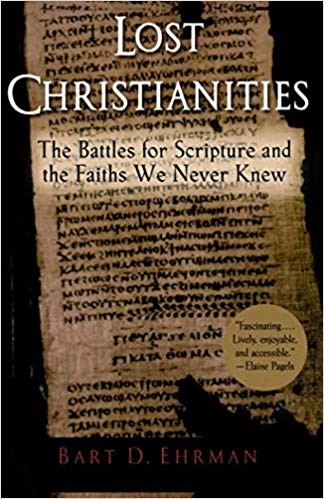 Lost Christianities: The Battles for Scripture and the Faiths We Never Knew The early Christian Church was a chaos of contending beliefs. Some groups of Christians claimed that there was not one God but two or twelve or thirty. Some believed that the world had not been created by God but by a lesser, ignorant deity. Certain sects maintained that Jesus was human but not divine, while others said he was divine but not human. In Lost Christianities, Bart D. Ehrman offers a fascinating look at these early forms of Christianity and shows how they came to be suppressed, reformed, or forgotten. All of these groups insisted that they upheld the teachings of Jesus and his apostles, and they all possessed writings that bore out their claims, books reputedly produced by Jesus's own followers. Modern archaeological work has recovered a number of key texts, and as Ehrman shows, these spectacular discoveries reveal religious diversity that says much about the ways in which history gets written by the winners. Ehrman's discussion ranges from considerations of various "lost scriptures" including forged gospels supposedly written by Simon Peter, Jesus's closest disciple, and Judas Thomas, Jesus's alleged twin brother to the disparate beliefs of such groups as the Jewish Christian Ebionites, the anti Jewish Marcionites, and various "Gnostic" sects. Ehrman examines in depth the battles that raged between "proto orthodox Christians" those who eventually compiled the canonical books of the New Testament and standardized Christian belief and the groups they denounced as heretics and ultimately overcame. Scrupulously researched and lucidly written, Lost Christianities is an eye opening account of politics, power, and the clash of ideas among Christians in the decades before one group came to see its views prevail.  Lost Scriptures While most people think that the twenty-seven books of the New Testament are the only sacred writings of the early Christians, this is not at all the case. A companion volume to Bart Ehrman's Lost Christianities, this book offers an anthology of up-to-date and readable translations of many non-canonical writings from the first centuries after Christ--texts that have been for the most part lost or neglected for almost two millennia. Here is an array of remarkably varied writings from early Christian groups whose visions of Jesus differ dramatically from our contemporary understanding. Readers will find Gospels supposedly authored by the apostle Philip, James the brother of Jesus, Mary Magdalen, and others. There are Acts originally ascribed to John and to Thecla, Paul's female companion; there are Epistles allegedly written by Paul to the Roman philosopher Seneca. And there is an apocalypse by Simon Peter that offers a guided tour of the afterlife, both the glorious ecstasies of the saints and the horrendous torments of the damned, and an Epistle by Titus, a companion of Paul, which argues page after page against sexual love, even within marriage, on the grounds that physical intimacy leads to damnation. In all, the anthology includes fifteen Gospels, five non-canonical Acts of the Apostles, thirteen Epistles, a number of Apocalypses and Secret Books, and several Canon lists. Ehrman has included a general introduction, plus brief introductions to each piece. This important anthology gives readers a vivid picture of the range of beliefs that battled each other in the first centuries of the Christian era. 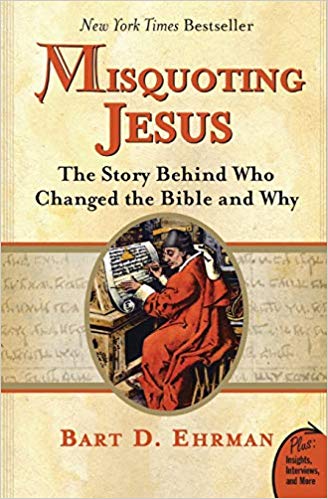 Misquoting Jesus: The Story Behind Who Changed the Bible and WhyFor almost 1,500 years, the New Testament manuscripts were copied by hand and mistakes and intentional changes abound in the competing manuscript versions. Religious and biblical scholar Bart Ehrman makes the provocative case that many of our widely held beliefs concerning the divinity of Jesus, the Trinity, and the divine origins of the Bible itself are the results of both intentional and accidental alterations by scribes. In this compelling and fascinating book, Ehrman shows where and why changes were made in our earliest surviving manuscripts, explaining for the first time how the many variations of our cherished biblical stories came to be, and why only certain versions of the stories qualify for publication in the Bibles we read today. Ehrman frames his account with personal reflections on how his study of the Greek manuscripts made him abandon his once ultraconservative views of the Bible. Over 40% of the all US homicides remain unsolved and what is the implication for illegal immigration9/2/2019 Currently, in the United States close to 40% of all homicides are unsolved. And why would this matter in regards to illegal immigration? Most people think of illegal immigrants either as hard working people that are looking to just get by and some people look at them as people that evade or laws of country and take advantage of our system in a way that is detrimental to the lower class working people already living here. Motives for various levels of control or lack of control along the border are perceived by various people as racist control measures on one end to a globalist conspiracy to build a global nation with no borders on the other. But what are the people actually coming across the border harboring. What are they like and who are they? Many people think more border control could at least control many diseases like Measles which might be brought from countries with inadequate health care, to stemming drug traffic, hampering human trafficking, and etc. Are these legitimate worries, well depends on all parameters; which country they are from, exposure, quarantine efforts, time of year, and etc. Many people think interest in more control is form of paranoia or racist. the critics of border control may feel that a free loving society should allow way ward people that took a difficult journey a chance in our country. This is a very difficult conversation that many people have talking about because the views vary so much on both sides. So MOTM would like to look at some very speculative numbers on how many of these people might be dangerous based on a rough analysis on homicides. First lets look at how many immigrants are living in the US right now and how many might be in the future? Currently, there are about 45.6 million foreign born people living in the US. About three fourths of them are naturalized or lawful residents in the United States. Of this 45.6 million about 10-11 million are unlawfully living in the US. Close to about half of all the unlawful residents in the US are from Mexico. Recent trends show that many immigrants from Central America and other parts of Latin America are replacing Mexico as the Latin country of origin for unlawful immigration. Before anybody gets offended remember the true number will probably never be known and we may never have the complete answer to this question. There are many other variables to consider. But lets first start by looking at homicide rates in the US. There were 17,250 homicides in the USA in 2016. If we consider the fact that 40% of homicides are unsolved, close to 6,900 people from 2016 are walking freely in US society that committed a homicide. If we use a rough estimate using 17,000 murders per year from 1989-2018. This number over a 30 year period could mean close to 204,000 people in the USA that have committed a homicide might be walking freely in society or 63 people per 100,000. This does not count duplicate killers, people that might have gone to prison for other charges, suspects dyeing from other causes, or etc. And this is purely an estimate. We will choose to analysis Latin America countries because the closer proximity toward the US border and the very larger number of Unlawful Residents in the US from these countries. And since the majority of Unlawful Residents over the last 10 years represented by Mexico. This purely makes making a rough speculative analysis easier to focus on Latin American Unlawful Residents that number currently close to 5 million. Currently, 42 out of 50 most dangerous cities in the world reside in Latin America, though it must be observed that three of the most dangerous cities in the world resound in the US. So comparing murder rates might have a more accurate source for analysis. Mexico currently has a homicide rate of about 29 per 100,000 people. This murder rate is about 5 to 6 times the US rate. And until recent trends Mexican Nationals represented the largest portion of illegal immigrants coming from Latin America. Many of the Latin American Countries have similar or much larger homicide rates then Mexico, for example Brazil had a homicide rate of 30 per 100,000 people. There is also no way to truly know the number of unsolved homicides that take place in Mexico or other Latin American Countries. But to give you an idea; it is estimated that 92% of all homicides in Brazil go unpunished and in 2013 it was estimated that 98% of all homicides in Mexico were unsolved. It was estimated that close to 33,000 homicides were committed in Mexico in 2018. If we apply the 40% unsolved estimation (by US Homicide unresolved cases) of the homicides in Mexico. Then then it can be estimated that possibly close to 13,000 people in Mexico are walking freely in society that may have committed a homicide from 2018. If we use the estimation that 98% of the murders went unresolved then close to 32,000 people are walking freely in Mexico society that committed a homicide. We applied this estimation method over 30 years using only 15,000 murders per year from 1998-2008 and using 20,000 murders per year from 2009-2018. We also adjusted for changing population. We used Mexico estimates to represent the Latin world since most of the countries have similar or higher homicide rates. If we use these numbers using the US unresolved estimate of 40% then close to 151 persons per 100,000 people in Mexico might be walking freely in society that committed a homicide. If we use the estimate of 98% of all homicides in Mexico are unsolved then close to 371 people per 100,000 people in Mexico might be walking freely in society that committed a homicide. Look at the table below to compare Homicide Suspects walking freely in society between Latin American and US. If you were betting on your life you could speculate that Mexico, if they have similar resolution of homicide cases, has about 151-371 people per 100,000 that committed a homicide walking freely in their society. This is quite a few more people than the US, but is it something to worry about? Which means that the number of people that committed a homicide and is walking freely in society could be potentially 3-6 times higher per hundred thousand people then the US. None of these numbers are set in stone, homicides rates change yearly, percent of resolved cases change, some people that committed homicides are duplicate killers, and etc. One could say that somebody is leaving their country because they are escaping violence but you could also say they are leaving because they want to escape justice. Even More, even though that seems high, also consider that 89% of homicides are estimated to be committed by men in Mexico and men represent about 50% of unlawful residents in the US. A very rough analysis suggests that adult age men coming from Mexico might have rate of 302 to 742 people per 100,000 walking freely in society that might have committed a homicide. This could be close to 3 to 8 people per 1,000 people. And 99% could be the best people you have ever met. So, should US policy be to accommodate the other 99% adult males spite the fact that we know about the danger that the 1% represent? Before you answer that consider that many people want to change and make strict gun laws while the US homicide rate is only 5 per 100,000 people. That ignores the fact that over 98% of the US population lives in a country that has a homicide rate of 2.5 or less than 100,000 people. Which is the more present or subtle danger? And 51% of Homicides in the US reside in only 2% of the counties.
Also Feel Free to Read MOTM Article Mexico’s Quasi Hybrid Insurgency and a Reflection on Murder Rate Statistics The Arrival of Human Beings into North America May have Predated the Early Arrival of Moose and Elk9/2/2019 A recent archaeology site shows that human beings were living in Idaho 16,000 years ago. There is some speculation to how they got there; via small boats following the Pacific Coast or across the Bering Land Bridge. This is not the first time that archaeologist evidence shows that human beings settled North America prior 14,000 years ago. “But in recent years, archaeologists have found numerous sites and artifacts older than that migration timeline, suggesting that early humans didn’t travel through the ice but followed the coast, likely using boats. A site called Monte Verde at the southern tip of Chile is at least 15,000 years old, a sinkhole in Florida recently yielded a knife and butchered mammoth bone more than 14,500 years old and the Gault site in Texas has yielded thousands of artifacts that could be 16,000 to 20,000 years old.(Smithsonian).” This article was not intended to press in on the remark-ability of the human beings settling North America at an early date than previously thought. Its intention is to examine how much the natural landscape has changed in the last 20,000 years in North America. Aside from the impacts from human beings from hunting large mega-fauna, use of fire for ecological altering of the ecosystem, and massive change in temperature and glacial ice changes from orbital variation. It is remarkable that the current person thinks that to some degree that Elk and Moose represent what is wilderness in this modern age. But, it is speculated that Mammoths, Giant Sloth, Stag-Moose, Caribou, Woodland Musk Ox, Giant Ice Age Beaver, Mammoths, Long Horned Bison, and Mastodons were more likely the dominate species across the landscape and preceded the Elk and Moose by Hundreds of thousands of years. Feel Free to Read MOTM article on early Paleohydrological Events Paleohydrological events from the late Pleistocene to the Holocene 30kya to 1500AD Moreover, it is believed that Moose and Elk did not arrive into the North America until about 15,000 years ago. Faunal record identifies Bering isthmus conditions as constraint to end-Pleistocene migration to the New World “In order to establish the pattern of faunal migration through the last glaciation, we first collated radiocarbon dates (figure 1a) for mammal taxa that have been proposed to undergo range expansion into Alaska during this period: brown bear (Ursus arctos), wapiti (Cervus elaphus), moose (Alces alces) and the Pleistocene lion (Panthera spelaea) [15,17,18]. Previous ancient DNA studies on brown bears identified a regional extinction in Alaska during Marine Isotope Stage 3 (MIS 3; 60–24 ka), with a subsequent recolonization from Siberia at 25 ka [15,19]. A similar high concentration of radiocarbon-dated lion bones from Alaska around 25 ka suggests either an expansion of a pre-existing population or further dispersal across Beringia. For wapiti and moose, by contrast, there are no unambiguous fossil records in Alaska until some 10 kyr later at 15 ka, contemporaneous with the earliest uncontested evidence of humans in eastern Beringia (Alaska) [18]. Wapiti and moose therefore have the potential to illuminate the timing and mode of faunal and human expansion into the New World, especially the problem of migration during MIS 3.” Mitochondrial Phylogeography of Moose (Alces alces): Late Pleistocene Divergence and Population Expansion “Timing of expansion for the population in the Yakutia–Manchuria region of eastern Asia indicates that it is one of the oldest populations of moose and may represent the source of founders of extant populations in North America, which were colonized within the last 15,000 years.” Did Elk (Cervus elephus) Live in North America Prior to 15,200 BP? “The DNA evidence from the study make it clear–all North American elk alive today descend from the elk migration across the Bering Landbridge that began about 15,000 years ago. But this doesn’t rule out the possibility that a now extinct Pleistocene ecomorph of the elk occurred in North America prior to this date.” Furthermore, the fossil evidence of Moose and Elk is generally absent in most fossil records prior to 15,000 years. It would be logical to think that aspen and spruce forests covering much of North America during the Ice age would offer abundant habitat for Moose. While remnants of Caribou and Stag-Moose are found in in places far south as Alabama, Georgia, and Tennessee. There is no record of Moose in those locations even though Glaciers were thought to come down as far south as Southern Iowa and Illinois.
The Presence of Caribou in Southeastern North America during the Pleistocene and it Paleoecological Implications “I hypothesize Ice Age ecosystems in southeastern North America were more diverse than they are today due to rapid climate fluctuations. Climate phases of warm wet interstadials (but cooler on average than today) and cold arid stadials alternated but the response of the floral and faunal composition to these rapid climate changes lagged behind. Some climate phases lasted for a few thousand years or perhaps just centuries or even decades. They weren’t long enough to completely eliminate habitat for species with warm temperate affinities, nor did they last long enough to extirpate habitat favorable for species with boreal affinities. This explains why eastern chipmunks co-occurred with least chipmunks, and why caribou may have shared the range with jaguars and tapirs. During cold phases though prairie and boreal forest expanded, oak woodlands persisted on some tracts of land, especially south-facing slopes. During warm phases oak woodlands expanded, but spruce forests persisted on north facing slopes. Herds of caribou formerly wandered through Georgia followed by packs of dire wolves and prides of lions. The herds traveled through fingers of prairie between open woods consisting of pine and spruce and oak where turkeys foraged on the ground and fishers chased gray squirrels through the tree tops. Landscapes of present day Georgia are unrecognizable by comparison.” Even more, while Human archaeology sites have been found through North and South America predating 14,000 years, the Moose was just starting to colonize the areas outside of Alaska. And the moose almost had a near brush with extinction where it’s population bottle-necked and almost did not have enough DNA diversity. Often one thinks of North America in a static state, as if there is one glacier event and then there is now. But, North America Glacier waxed and waned; and the climate change was radically changing all the time, and ecosystems were constantly changing. Free Read MOTM Article Micro Interglacial Cycles and an Alternative Understanding to Sea Level Fluctuations from a Paleoclimatic Perspective the Last 140,000 Years Just like the Ecosystems and Climate were in constant change, so were the populations of Animals. There was not one wave of Mammoths or Bison for example. There were numerous waves of different sub species over several hundred thousand years. There were many small extinctions and evolution of many new Subspecies. Also, North America is not just a melting pot for many cultures as many people see the modern US as today. It was a melting pot for wildlife, after the great biological migration about 2.5 million years ago were the land bridge from South America joined with North America it was soon to because migration destination for wildlife coming from Eurasia the last million years via the Bering Land Bridge that was exposed due to Glacier Fluctuations. In Future Articles MOTM staff would like to investigate the layered migration of Bison and Mammoths to North America. Furthermore MOTM would like to delve into how the Mastodon (Elephas americanum), Jefferson’s Ground Sloth (Megalonyx jeffersonii), and the Columbia Mammoth (Mammuthus columbi or Mammuthus jeffersoni) may have shared the landscape and how they all represent something intriguing about the wildlife exchange in the Americas the last 2.5 million years. Many people are probably wishing Andrés Manuel López Obrador God's Speed for the challenges he inherited as the newly elected president of Mexico. Many people following trends and headlines were probably not surprised to hear the most recent news. But, Mexico passed last years tragic number of homicides. Depending on your source of information, it is estimated that 33,431 murders took place in Mexico in 2018 compared to 28,861 murders in 2017. Just like last years number, the death toll is probably somewhat higher because of missing persons. below is a graph that compares Mexico Murders to US murders. If US had the same murder rate the number of murders in the US would be 80,000 If it was only homicides Andrés Manuel López Obrador may be in a position to quickly solve some of the problems. However, as we pointed out in MOTM BULLETIN NEWS LATIN AMERICA HIGHLIGHTS FROM 2018 Mexico has been plagued by political assassinations, Journalist murders, kidnappings, Gasoline/Diesel production collapse, Gasoline theft, and Gasoline Shortages. Mexico also reached headlines this week when 89 people died from a exploding Gas Line that was being illegally tapped. Also, recently the US government Partial Government is making headlines around the world as it reaches the 31st day. Below we show that the number of arrests and asylum claims on the border have increased from last year.  Currently the majority of the current border barriers are mostly meant for stopping Vehicle and are in poor condition. A alternative border plan should at least cover replacement for current border barriers. The graphs below show the amount of Heroin seized on the left, and shows the smuggling routes of various cartels on the right. This graphic below shows the number of prototypes they are looking at for building new barriers and replacing old ones.  |
Proudly powered by Weebly
- Home
-
Articles
-
2017
>
- North Korea; A Reflection of a Global Hybrid Conflict
- Turkish Crisis: World War III but nobody knows what side they are on?
- Glaciers or Rising Oceans; Damned if you do, damned if don’t, And maybe both
- Walls, Walls, Walls
- France's Hybrid Civil War
- Predictions of space exploration for the next 500 years
-
2018
>
- NOAA shows a modest 3.2mm sea level rise over the last year. How significant is the current sea level raise from a geological perspective?
- Mexico’s Quasi Hybrid Insurgency and a Reflection on Murder Rate Statistics
- Russia strives for imperial might in the context of the first World Hybrid War
- Paleohydrological events from the late Pleistocene to the early Holocene 30kya to 1500 AD
-
2019
>
- Micro Interglacial Cycles and an alternative understanding to Sea Level Fluctuations from a Paleoclimatic Perspective the Last 140,000 years
- Increasing Summer Insolation of the Northern Hemisphere Trends Towards Reduced Ice Volume; Coupled by a 400,000 year Eccentricity Cycle Extending the Holocene Interglacial
- Why are the Chinese Grumpy: Up to 500 million people died from famine, natural disasters, war, political suppression, ethnic cleansing, pestilence and such the last 2200 years
- China's New Dynasty: Middle Class, Automobile, Science, and Robot Revolution
- Orbital Variations Effects on Interglacial Behavior and Paleohydrological Events during the Quaternary Ice Age: A Compilation of MOTM editorial pieces
- Native American Society and Civilization Collapse Part I; Old World Diseases and Expansion/Collapse of Empires not Unique to European Colonization
-
2020
>
- The History of the “Sieg Heil” Nazi Salute and its shared common origins with the Roman Salute, Bellamy salute, and the swearing in of the Mexico President; And the not so innocent raising of the Fist of Black power
- In the excitement of the 2019-2020 Bush Fires in Australia; people have forgotten about the Legendary Australian Bush Fire of 1974-1975. The Current Bush Fire doesn’t even hold a torch up to it
- Covid 19 Crisis; what does age have to do about it in Italy, forgotten cancer crisis caused by the financial crisis in 2009, and why Africa doesn’t care
- A Quick Look at Nuclear Power in 2020 and Beyond
- India: Rising Economic Star with a Contentious and Troubling Past
-
2017
>
- BulletinNews
- MOTM EM
- Video
- Meetings/Symposium
- Podcasts
- Contributing Organizations



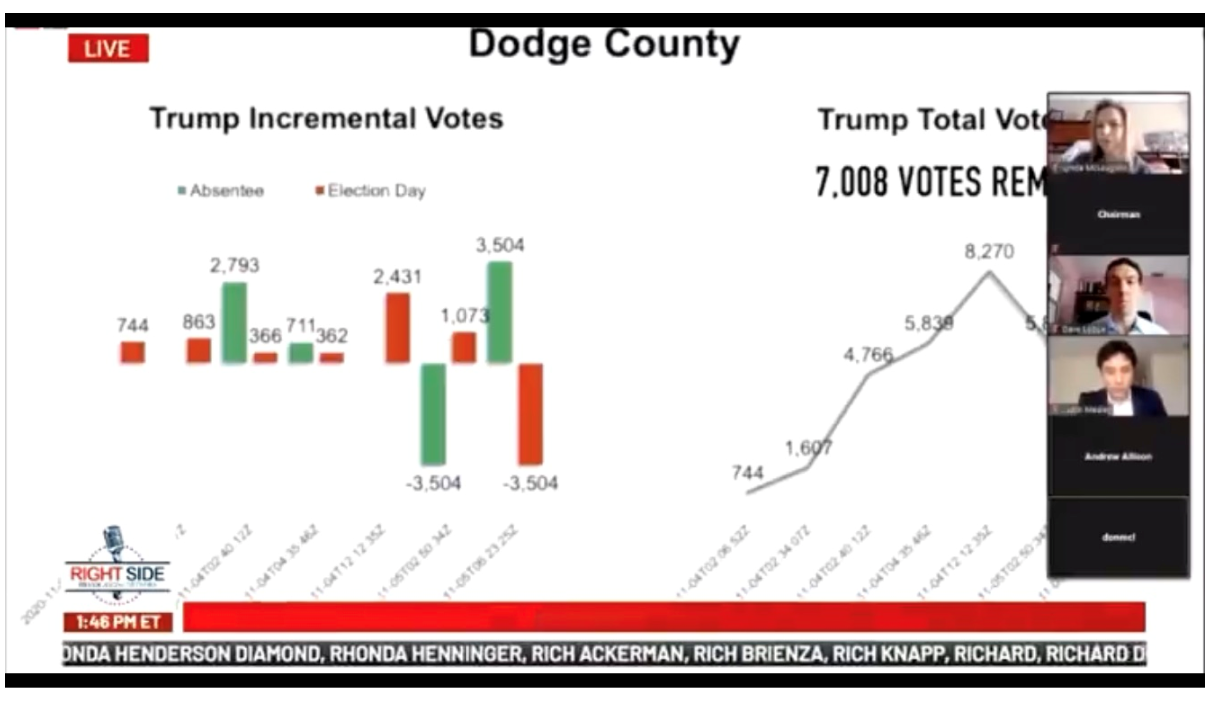



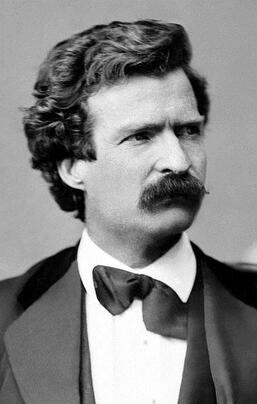

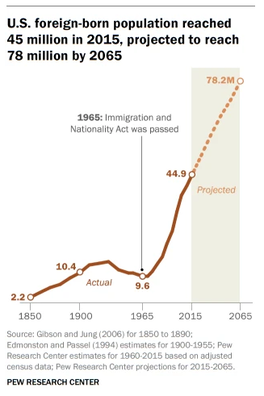
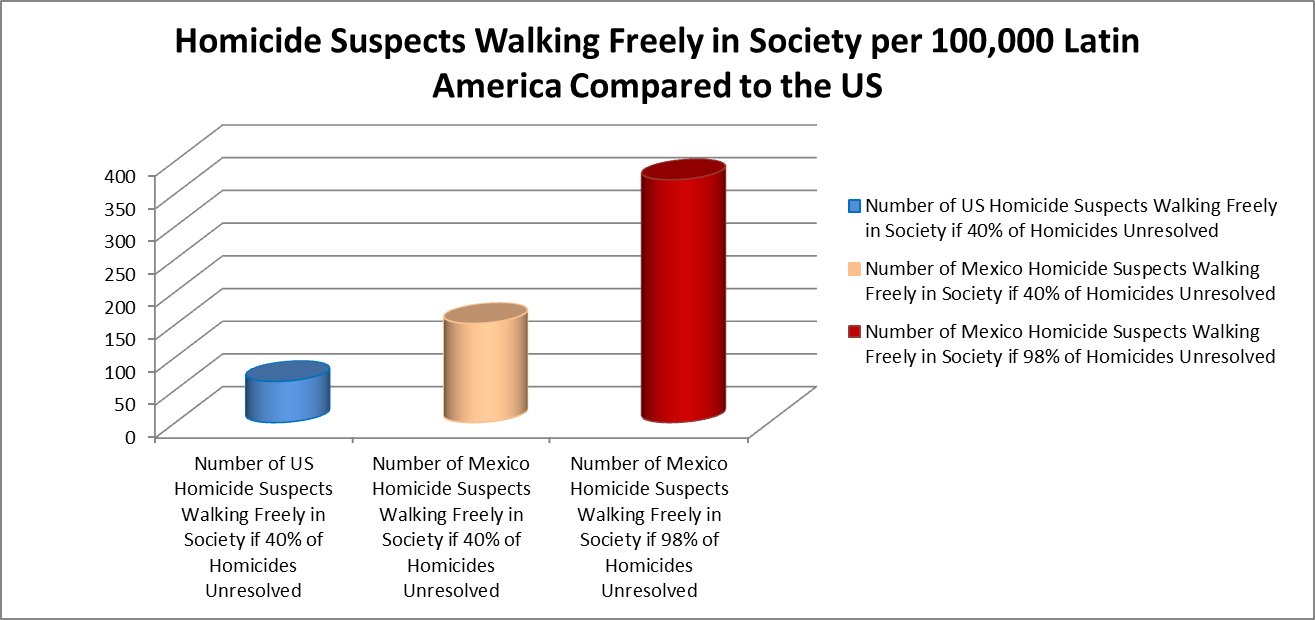
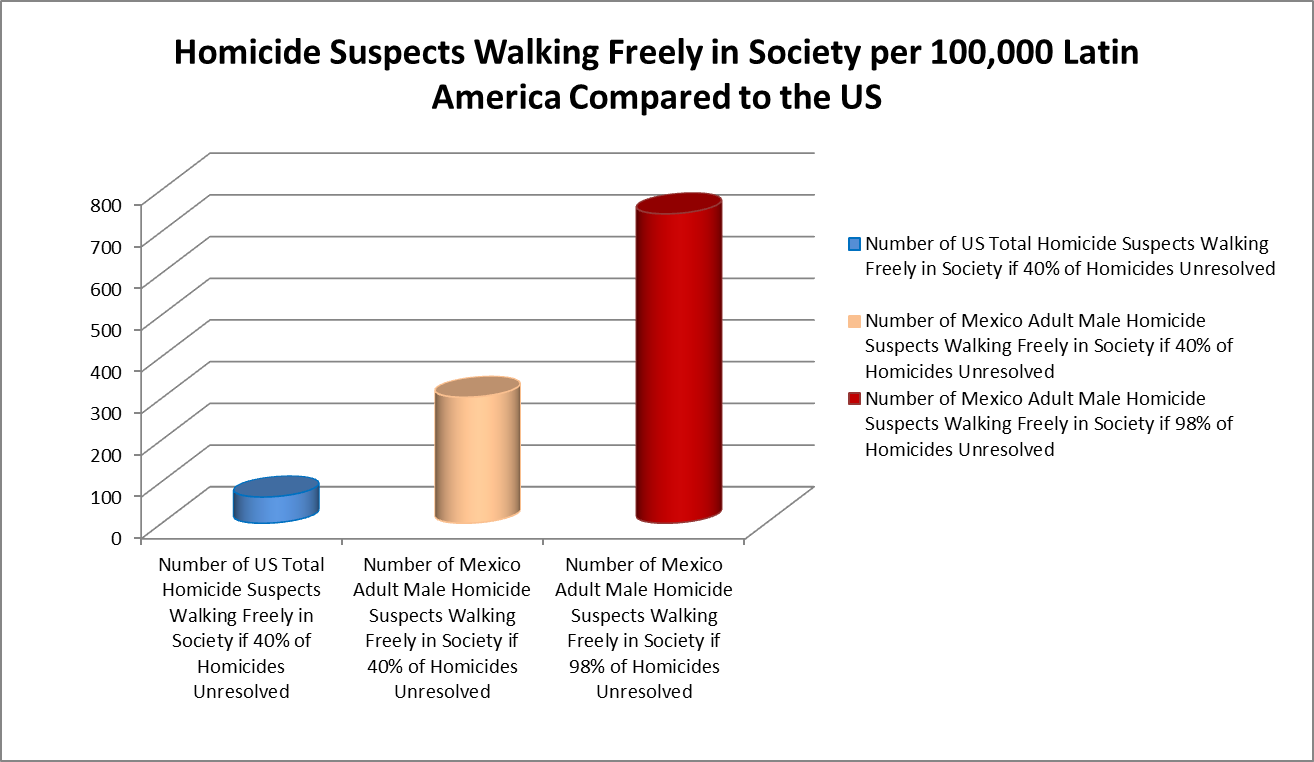
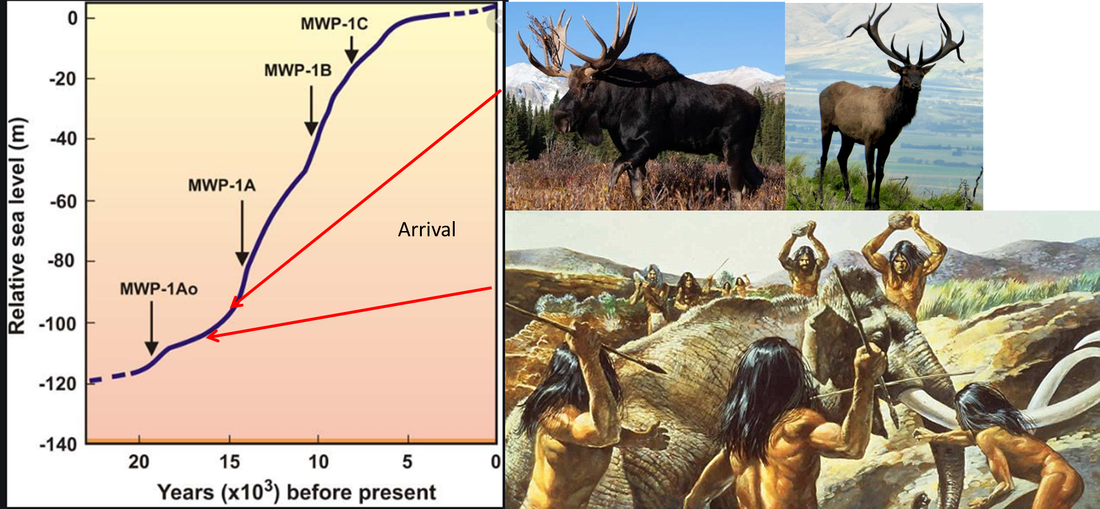
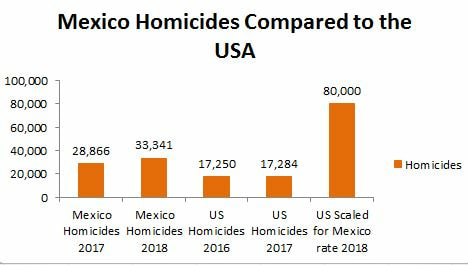
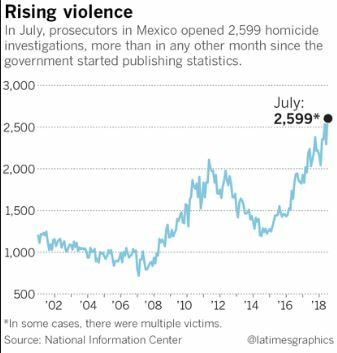
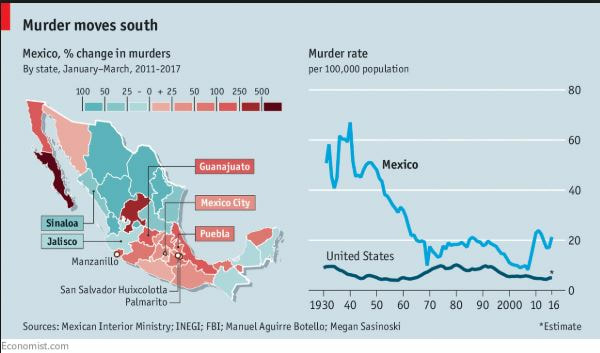

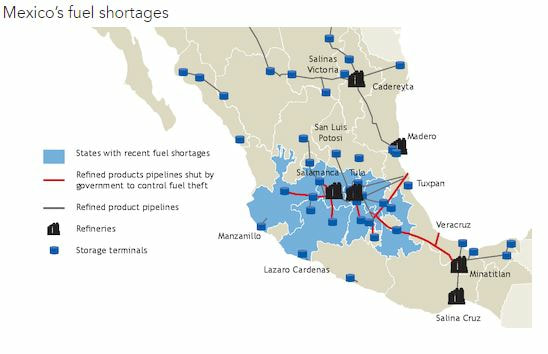
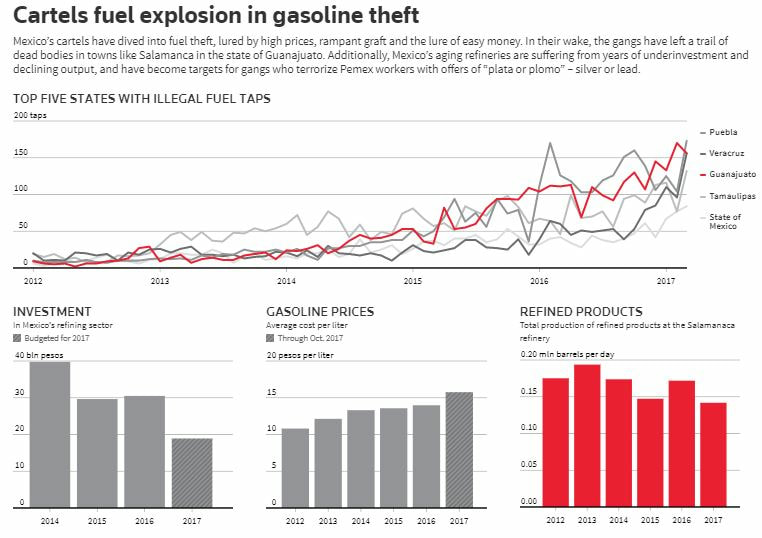
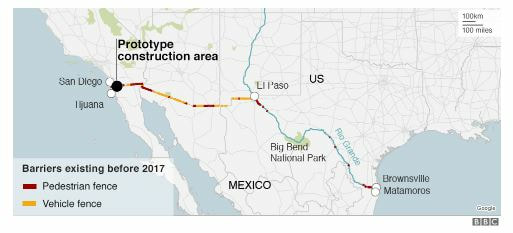
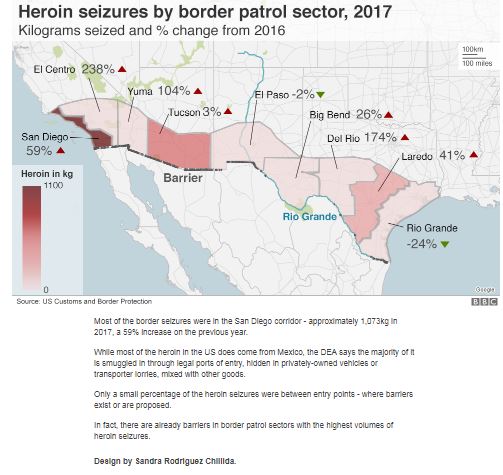

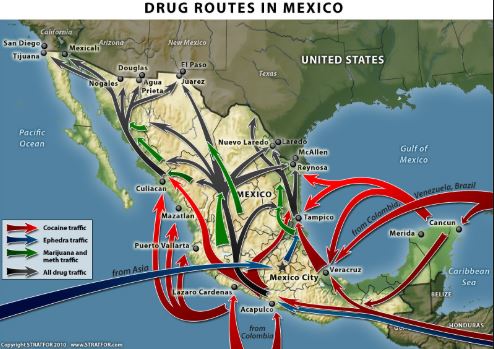
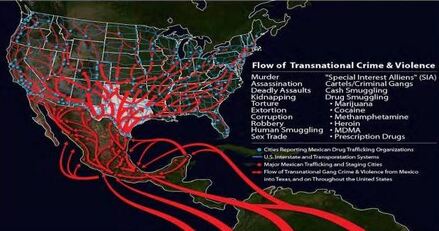
 RSS Feed
RSS Feed